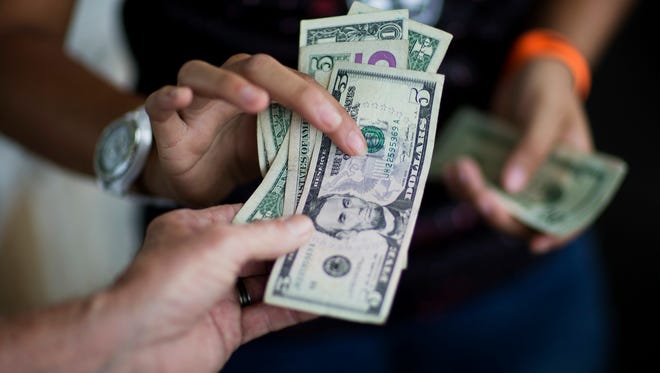Economic growth lackluster at end of 2016 but stronger gains may lie ahead

The economy slowed in the fourth quarter as weaker business investment offset solid consumer spending, the government said Tuesday. Still, stronger gains may lie ahead.
The nation’s gross domestic product -- the value of all goods and services produced in the U.S. – grew at a seasonally adjusted annual rate of 1.9%, matching the initial estimate last month, the Commerce Department said. Economists were expecting an upward revision to 2.1% growth. While consumer spending grew a bit more rapidly than first believed, business investment and government spending advanced more slowly.
After nine months of sluggish gains, the economy grew at a 3.5% rate in the third quarter, a two-year high, before slowing to a pace more characteristic of the 7½-year-old recovery. For all of 2016, the economy grew 1.6%, below the 2.6% posted in 2015 and the recovery's tepid 2.2% average.
Many economists expect growth of about 2% in the first quarter followed by an expansion of 2.3% for 2017 and bigger gains in coming years if Congress passes President Trump’s proposed fiscal stimulus, which would include big tax cuts and infrastructure spending. Trump is expected to outline his plans in a speech before a joint session of Congress Tuesday evening.
Wall Street's expectations 'are very high' for Trump speech
Consumer spending, which makes up about 70% of economic activity, grew a healthy 3% in the fourth quarter, above the 2.5% previously estimated. People are opening their wallets, encouraged by solid job and income growth, inexpensive gasoline, and higher home and stock prices.
But business investment, which had shown signs of rebounding from a slump brought on by rising energy costs, increased 1.3%, below the 2.4% initially predicted.
And state and local government spending rose just 1.3%, half the previous estimate, hurt by lower personal income and sales tax revenue.
Housing starts were a bright spot. They grew a bit less rapidly than estimated but still posted a robust 9.6% gain after two months of declines. And business stockpiling contributed nearly 1% to growth, continuing a rebound after falling for five quarters.
The biggest drag on growth was exports, which fell 4%, slightly less than previously estimated. The drop was partly a reaction to a third-quarter jump in shipments resulting from more U.S. soybeans going overseas amid a poor harvest in South America. Imports, meanwhile, increased 8.5%, a bit more rapidly than believed, leaving a slightly wider trade gap.
Consumer spending is expected to drive growth again in the first quarter, but that will likely be offset by sluggish exports and a pullback in business stockpiling, leaving growth at a modest 2%, Gregory Daco of Oxford Economics wrote in a note to clients. But economist Paul Ashworth of Capital Economics expects 2.5% growth by 2018 after Congress passes a compromise version of Trump’s stimulus plan.
Finally! Fed hikes rates for first time in 2016, forecast 3 more in 2017